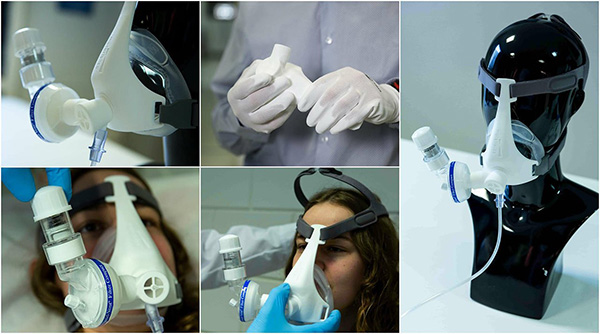3D printing has improved a lot since the time it was introduced. The time spent on printing the items will depend on the printer’s quality and how complex the item is. As we are into a new era with Covid-19 affecting the supply chain that resulted in shortages of vital medical equipment, 3D printing has helped not just the electronics companies but the medical industry as well.

3D printed oxygen PEEP masks*
Limited Supply
For medical workers being the front liners during this time of the pandemic, it is quite a terrifying time. The hospitals in the US are getting a huge volume of patients and protective supplies like PPEs are not enough. Supplies like facemasks, eye protection, face shields, gloves, and clothing are badly needed. Because of the limited supply of PPEs, the front liners are at high risk of getting COVID-19. To deal with this, some hospitals re-use protective gear, as little protection is much better than having no protection at all.
The medical industry is also having problems with their supply of COVID-19 testing kits and swabs, ventilators, and respirators. Without enough supply of these, it will be hard for the experts to know the actual count of the infected patients. It will be hard for those who are sick to know if they have COVID or not. The ventilator and respirator shortage will continue to add physical and emotional strain on medical staff as needed, life-saving devices are limited. The doctors are forced to triage patients and decides who will get a ventilator and can get the right to live and who will not.
Masks have run out of supply and its availability is restricted not just to medical staff but to the general public as well. The Center for Disease Control has instructed the people in the US to wear face coverings to reduce the risk of spreading coronavirus. Social distancing is the best protective action but using face coverings or masks is an added precaution to help stop the spread of the virus. And because of this, people are creating homemade masks using handkerchiefs or other materials.
The Role of 3D Printing in this Pandemic
To help in providing the needed PPEs, the 3D printing community is working together with some initiatives. Lots of organizations and companies are focusing on the shortages to easily get materials for medical professionals and the general public as well. Below are some examples of how 3D printing can save lives in this pandemic.
One of the primary concerns at present is the lack of availability of test kits for coronavirus. Most of the companies can print only limited numbers of printing. They can only manufacture 100,000 nasal swabs each day. These swabs are essential components in test kits and are utilized to diagnose and deal with patients appropriately.
Different Companies Use 3D Printing to Cope Up with Shortage of PPEs
NASCAR a big company known for building composite parts of future stock cars has been using 3D printing. But, now that their production has stopped, they use their 3D printers to develop PPEs for healthcare workers. The company’s printers run eight hours a day to produce face shields as much as they can to donate to hospitals.
Other big car companies like Chevrolet, Toyota, and Forts are working together with GE Healthcare to develop air-pressured ventilators. They aim to produce 50,000 face masks a day. Toyota, on the other hand, is developing face shields and work together with medical device companies to hasten the production of ventilators.
As the need for life saving devices such as respirators and ventilators arise, the first respirator developed using 3D printing has been completed and approved by medical experts in Spain. The said respirators were designed by well-known and respected individuals in Spain. These respirators are used to help patients breathe during an emergency. The design of the machine has been simplified which means it has fewer parts for ease of assembling it. They are aiming to manufacture at least 50 to 100 units a day.
While Copper 3D has shared online an open-source file for a 3D-printable N-95 mask. The mask only takes two hours to print and includes assembly instructions. They advise users to dispose of the mask after 8 hours of using it.
Just like most of the 3D printed items, the quality is not the same as the conventionally made items. Take note also that this device is not yet certified. In Europe, several projects similar to this have also emerged, just like the Pugliese-Sicilian which is an open-source mask project. It is a web platform that lets users download and print the mask at home.
Final Thoughts
With the present situation and the increasing number of the need for PPEs, 3D printing can increase the production of the supplies. We all know that these protective gears can save lives not just of the front liners but even ordinary individuals.
Reference
*Image from https://3dprinting.com/
